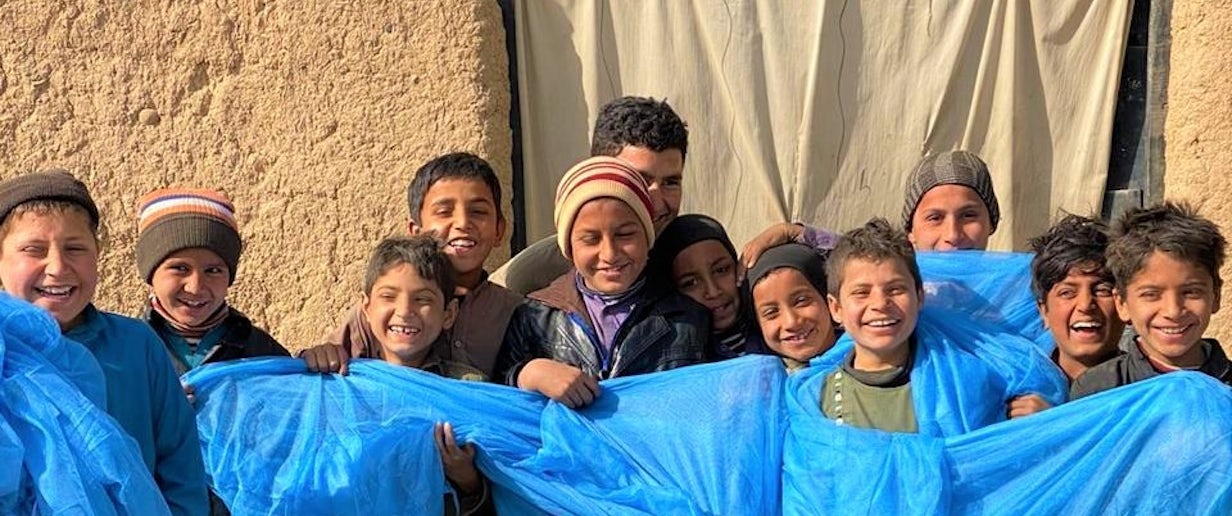How Pakistan Has Kept Up Its Fight Against Malaria Amid the Pandemic
by APLMA •

Mosquito net distribution at Pakistan's tribal areas © DMC, Pakistan
In December 2020, with Pakistan in the grips of the pandemic, 8,000 volunteers in the country’s restive tribal region managed to distribute nearly 1.5 million mosquito nets to more than half a million households in the country’s remote tribal areas without contracting a single known case of COVID-19. How they did it offers a valuable lesson about how health authorities, by collaborating with communities and other stakeholders, can keep new health threats from disrupting the ongoing battle against other life-threatening diseases, including malaria.
While the pandemic has directly affected the economy, lives and livelihoods of millions, it has had a domino effect on the efforts to prevent other communicable diseases such as malaria, HIV and tuberculosis. The Covid-19 pandemic is putting enormous stress on healthcare systems in countries with limited resources, Covid-19 has hindered their ability to respond effectively to these communicable diseases. The pandemic and countries’ efforts to contain it have disrupted the delivery of essential health services and commodities.
With nearly a million confirmed Covid-19 cases (978,847) and almost 23,000 (22,642) deaths as of mid-July, Pakistan reached the peak of its own pandemic in mid-June. Measures by the government have flattened the curve. Pakistan went into a nationwide lockdown in April 2020, which was then extended until May 9, 2020. After the first wave of cases, the lockdown was eased and, since then, Pakistan has been implementing “smart lockdowns”—short-term restrictions at Covid-19 hotspots, based on surveillance data—to curb the spread of the virus. Smart lockdowns, while allowing for the economy to recover, also enabled health programs to resume delivery of essential health services by allowing health workers outside targeted hotspots to remain mobile.
But in the pandemic’s early stages— from late May to mid-July 2020—the pandemic and measures to contain it had a profound impact on malaria elimination efforts. The nationwide lockdown led to the closure of healthcare facilities and a 30% decline in screening of suspected malaria cases[1]. Because many of the symptoms of malaria and Covid-19 are similar, patients were reluctant to seek treatment due to fear of being misdiagnosed with Covid-19 and forced to isolate. To reduce this fear, the government issued Covid-19 advisories to the general population, encouraging anyone ill to seek treatment. There was a shortage of protective gear, such as personal protective equipment (PPE) kits, sanitizers and masks for health workers, but once supplies were replenished, the delivery of essential health services resumed. Face-to-face training and capacity-building programs, supervisory visits, mass awareness and distribution campaigns were disrupted as well. In-person training eventually resumed, albeit while observing social-distancing rules, which reduced the number of participants and training time.
Pakistan’s malaria program turned to alternative media, including WhatsApp, radio and mosque announcements, to carry out mass awareness campaigns. As the pandemic first unfolded in Pakistan in May and July of 2020, when some project activities such as field data validation were delayed, social media channels were eventually used to share and validate data.
Another vital success story in Pakistan’s efforts to fight malaria amid the pandemic was its Long-Lasting Insecticidal Nets (LLIN) distribution campaign in its very challenging tribal areas (referred to as Merged Tribal Areas (MTAs)[2], where roughly 5 million people in 558,300 households live across a rugged and remote territory covering 27,500 square kilometres on Pakistan’s northwest border with southern Afghanistan. Years of conflict in the region have made it a particularly difficult place to deliver health services. Historically, access to healthcare in this region has remained poor, compounded by a weak public health infrastructure, shortage of healthcare providers, limited utility services and security concerns. As a result, MTAs reported the highest Annual Parasite Index (API) of 12.9 in Pakistan in 2019.
The Directorate of Malaria Control (DMC), with support from the Indus Hospital and Health Network (IHHN) and funding from The Global Fund, conducted a LLIN distribution campaign in 2018. A remarkable 2.5 million nets were distributed in 11 districts of Balochistan, Sindh, Khyber Pakhtunkhwa, and Tribal Districts. A similar distribution campaign was planned in MTAs between June and September of 2020 by the Integrated Vector Management Program (IVMP) with the Government of Khyber Pakhtunkhwa (KPK) as an implementing partner. However, the campaign had to be pushed back to December 2020 due to the pandemic. Then, to reduce the risks inherent in gathering residents to collect nets in one place, DMC shifted its distribution strategy to going door-to-door. The campaign was technically supported by Alliance for Malaria Prevention, the World Health Organization and funded by The Global Fund.
DMC adopted a whole-of-society approach in implementing its campaign. A tripartite contract, clearly defining roles and responsibilities, timeframe, and budget-sharing was signed by the DMC, the KPK and The Indus Hospital. For security reasons, DMC collaborated with security forces to get the necessary permissions and guidance in navigating the region to implement the campaign.[3] Similarly, community leaders called maliks were also engaged to drive awareness about the campaign. The bulk of the distribution was done by community volunteers who were trained to strictly follow standard operating procedures (SOPs) and guidelines for distribution, which included wearing masks, regular hand washing, sanitizing, and social distancing. Since the volunteers belonged to the local community, they were well aware of the social and cultural norms—which would have an impact on community’s trust and thus their acceptance of the nets. They distributed 1.49 million nets to 530,395 households in only a week and not a single volunteer was confirmed as having been infected with Covid-19.
Distribution of LLINs is a key vector control measure, intended to protect population at risk of malaria in highly endemic districts. Against the backdrop of the ongoing global pandemic, gains made in fighting malaria over the past decade must not be jeopardized. Pakistan’s success in quickly adapting its distribution and training strategies for malaria in an extremely challenging and hard-to-reach part of the country offer a lesson in how not to lose ground against malaria despite threats posed by ongoing and future pandemics.
This article was developed with input from Dr. Muhammad Mukhtar (DMC, Pakistan), Dr. Abdul Majeed (DMC, Pakistan), Dr. Hammad Habib (DMC Pakistan), Dr. Shaista Ilyas (Integrated Vector Management Programme), Dr. Bushra Jamil (Common Management Unit for AIDs, TB and Malaria), Dr. Razia Fatima (Common Management Unit for AIDs, TB and Malaria) and Dr. Mah Talat (Indus Hospital and Health Network)
[1] Reported by Directorate of Malaria Control Pakistan
[2] FATA (previously) was officially merged with Khyber Pakhtunkhwa (KPK) province on 31 May 2018 and is since known as Merged Tribal Areas (MTA)
[3] The military restricts domestic and international humanitarian access to MTAs conflict zones





